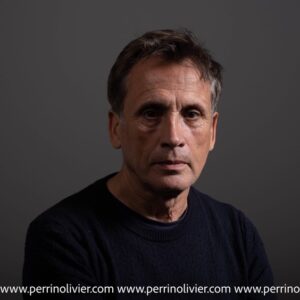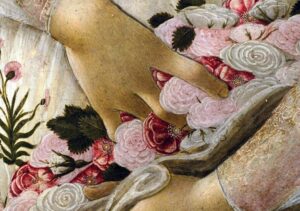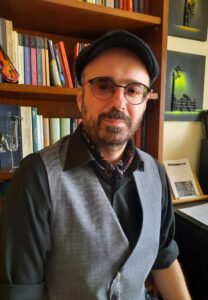SCHEDULE

Dr. Janet Evans is an Independent Scholar, Literacy and Educational Consultant and former Senior Lecturer in Education.
Writing from Reading : Creative and Aesthetic Responses To Picturebooks and Fine Art
Reading and Writing Float on a sea of talk
James Britten
To become effective writers children need to read and be exposed to high quality literature and educators need to use this same literature to model writing effectively with all the appropriate skills, styles and techniques. “Children write what they read and they learn from the company they keep.” Frank Smith
When responding to picturebooks, the reader, “must find routes through the text that connect words and images” Lewis (2001). Similarly, when responding to works of art the viewer needs to find comparable routes, that is, routes, which allow them to view, read and respond to all aspects of the artwork as a whole. “Children can be taught to appreciate the great works of art by talking about them.” Brice Heath & Wolf
It seems that we can view and respond to works of art in the same way as we can read and respond to picturebooks; however, one important difference is that when responding to picturebooks, the story is made explicit through the words in combination with the illustrations, whilst with works of art, there are no words, so the viewer needs to have an expectation that the art will “tell a story” in the same way as a picturebook does, even if the “story” is hidden behind symbols and isn’t always easy to detect at first glance. Viewers often need to be shown and taught how to look at and respond to great works of art in the same way that they need showing how to respond to books.
There is no art for children, there is art. There are no graphics for children, there are graphics … There is no literature for children, there is literature.
Francoise Ruy-Vidal.
This presentation which will be a blend of theory and practice, will consider the picturebook as an art form prior to sharing how one particular book was used as a stimulus for some reader response work which led to in-depth, creative writing and aesthetic responses to fine art.
Keywords: picturebooks, reader response, creative and aesthetic writing, fine art.

Fenando Carmino Marques is Professor of the University UTC de Línguas e Culturas of Portugal
Title: “How to teach poetry in times of A.I.”.
Abstract
Because poetry is not a mere play on words, it must be read and said aloud.
And as each poem has its own life, poetry is to be felt with the body and soul, through a simple interpretation, without artifice or unnecessary emphasis.
The intention of this workshop is to raise awareness of the need to transmit poetry instead of teaching poetry. To live poetry by imagining communicative situations that free us, in which a simple verse consoles us, encourages us, or congratulates someone, and makes us aware of the power unlimited of the word.
For this workshop, for reading and performing the students must learn one or two poems by heart.
Keywords: Poetry, To read and say, Creativity, Feel the words, Teaching.

Botticelli ,Primavera (detail) 1480 c. , Le Gallerie degli Uffizi .
Nazim Agil is professor of Koc University/Department of English Language and Comparative Literature
Tzina Kalogirou
Professor of Modern Greek Literature and Literature Teaching in the School of Education/Department of Pedagogy and Primary Education at the National and Kapodistrian University of Athens in Greece and Director of two Postgraduate Programs: of Rhetoric, Humanities, and Education (Interinstitutional-interdepartmental, NKUOA/UWM) and of Social Sciences and Humanities in Education (DPPE/NKUOA).
Nazmi Ağil & Tzina Kalogirou
Koç University, Turkey & National and Kapodistrian University of Athens, Greece
Practicing Ekphrasis: “Sometimes it does us all good/ To see through another’s eye”
Paintings do not move, though grant for writings’ sake[1].
Ekphrasis, which is briefly defined as “verbal representation of visual representation” has a long history that reaches back to Homer’s The Iliad, where he describes the scenes on Achilles’ shield. Since then, it has been a popular genre with the representative figures of every age, including Virgil, Dante, Chaucer, Shakespeare, Keats, Auden, John Ashbery and today, the Nobel winning Turkish novelist Orhan Pamuk and many Greek poets (such as C.P. Cavafy, O. Elytis, etc.). Ekphrasis can be in verse or in prose, but it has traditionally been related with poetry, which therefore will be the focus of this present workshop. In the first part, we will make a brief introduction to the theory of ekphrasis, and try to answer such questions as: why does a poet write about an artist’s work instead of getting his inspiration directly from life? Is the relationship between the two arts always friendly or are they in competition to better represent the reality? Is ekphrasis a gendered genre? What ekphrastic opportunities do different visual arts, -like painting, photography or sculpture- provide for the poet? The second part of the workshop will be devoted to the practice of ekphrasis. We will invite the participants to write a few lines about a particular visual, which will be made easier by the guidelines that we will provide. In fact, this is one of the favorite exercises in creative writing workshops and there are several ways to approach a visual model: You can simply give a detailed, objective description of what you see, or you can describe the artist at work. You can give voice to the silent image or express your own thoughts as you stand meditating in front of it. Some poets imitate the style of the artist, or in competition with him/her attempt to recreate the artwork through a typographic arrangement of the words on the page. Some poets even just use the visual model as a jumping board and go on telling their own stories. At the end of the session, we hope that the participants will develop a feeling of empathy with the artist, a deeper appreciation of the artwork, an awareness of the benefits of looking through another’s eye and also discover their own creative potential. Who knows, there may be a sleeping poet in each of us waiting to be woken up by the tickle of a brush or the sound of a chisel.
Botticelli ,Primavera (detail) 1480 c. , Le Gallerie degli Uffizi .
[1] The title draws upon a line from Romeo and Juliet (Act 1,Scene 5): Saints do not move, though grant for prayers’ sake.

OLYMPUS DIGITAL CAMERA
“Performance Poetry & the Embodiment of Poetic Speech”
Georgia Velivasaki
Poet, Performer, Instructor of Performance Poetry, PhD Candidate of Creative Writing at the University of Western Macedonia
In the field of Performance Poetry speech leaves the two-dimensional world of the page in order to be transcribed and presented by the poet as a live three-dimensional physical audiovisual poetic event in front of an audience. The poet-performer designs the opus choosing the materials, the techniques and the style of the poetic composition, according to his/her aesthetic and structural framework, taking into consideration the technological tools at his/her disposal as well as the “here-and-now” (space and time) condition. Having said that, the following questions arise: What is the material or the artistic practices with which he/she will interweave the poetic speech? What would his/her own positioning as a presence be in front of the audience?
In this workshop, we will outline the basic elements and the techniques of performance poetry. We will, especially, focus on the way the poet-performer embodies his/her poetic speech through his/her body and voice, without dramatizing or acting out something, like an acrobat who leads and simultaneously participates in his/her own acrobatics. Subsequently, we will playfully experiment and create our own live, experiential, participative, performance poem-art.
Keywords: Performance Poetics, Performance Poetry, Performativity, Embodiment of Poetic Speech

Title: “Reflections of the Pontic Woman in Space and Time”
ABSTRACT
This Creative Writing and Applied Theatre Workshop draws inspiration from the one-act play “Hourglass,” which is based on a Pontic funeral custom with roots in antiquity and symbols as meaning-making mechanisms from ancient to contemporary times. “Hourglass,” as an artistic entity, aims to evoke a state of mnemonic euphoria for participants, carving internal pathways that will form threads connecting the voices of the past with the present. The memories of Pontic Hellenism, the mirages and representations of the Pontic woman across space and time, become a widespread call for interdisciplinary creation and expression for participants, bringing to life their own experiences of transition from light to darkness, and from darkness to light with Creative Writing and Applied Theare as mediators of self-expression, and inspiration.
The workshop will enable participants to expand their toolbox with creative writing and applied theater techniques, as cross-disciplinary agencies for participatory embodiment and action.
Keywords: Pontic Hellenism, memories, mnemonic intoxication, Creative Writing, Applied Theatre
Maria Kalouptsi
Philologist of Spanish language and culture – translator – PhD candidate in Spanish-American literature, ΜΑ Creative Writing, University of Western Macedonia
Translation of Mexican Literature:
Short Story: “Nos han dado la tierra” by Juan Rulfo
(Theme: Poverty and Social Inequality in Post-Revolutionary Mexico)
Collaborative Work Method: Round Table Strategy
- Separation of participants into groups
- Each group will work on a separate piece of the original translation of the text, under the guidance of the teacher (so that the source language is not a limiting factor for participation, the original translation will be given, which will be a text with possible options of synonyms and syntactic combinations)
- Collective proofreading to produce the final commonly accepted translation
Materials and Equipment: Photocopies, internet Access, computer and projector for text correction (correction on an online document so everyone can see it at the same time).
Expected results:
- Acquaintance with the translation technique
- Development of translation skills
- Connecting translation and creative writing
- Acquaintance with a typical sample of Mexican literature and contact with a historically and socially significant period for the country
- Interaction
- Development of interpersonal skills
- Making decisions collectively
- Openness to criticism, acceptance of mistakes, and revision
- Developing personal accountability and responsibility
- Joint decision-making
- Tolerance of criticism, acceptance of mistakes, revision
- Development of individual responsibility and co-responsibility

Lyric Writing Workshop
Summary
The lyric writing workshop (recommended duration 2 or 3 hours) can be included as an engaging alternative activity during our 6th International Conference. Participants will have the opportunity to compose their own lyrics based on familiar melodies.
Initially, the workshop coordinator will present a basic introductory theory (via PowerPoint) and then provide several characteristic examples with accessible lyrics that skillfully incorporate and alternate between the five main poetic meters (Iambic, Trochaic, Anapestic, Amphibrachic, Dactylic).
Once the above concepts are adequately understood and any arising questions are addressed, participants, if numerous, will be divided into groups of two or three. They will attempt to adapt some recognizable songs by mimicking the meter, syllable count, rhyme quality, and stanza structure.
During the process, the coordinator will read the metrical poems aloud, offering creative assistance with ideas and suggestions until the desired artistic result is achieved. In the end, the coordinator will take up his guitar and sing, either solo or with the help of the participants, the new lyrics that emerge as variations of the original song. Depending on the available time, this process may be repeated multiple times.
In summary, the lyric writing workshop is directly related to the art of music and song, providing an auditory experience as metrical poetic speech falls within the realm of oral literature and is conveyed through the human voice.
Keywords
(Lyric Writing, Music, Creative Writing)

Lena Yokoyama, Illustration for a New York Times Insider on the topic of Translation, New York Times, Editorial 2023
Translation as creative writing:
Trilingual poetic responses (English & French to Greek)
Coordinators:
Nefeli Gkatsou, PhD in Linguistics NKUA – Teacher – Translator – Poet
Matianna Naka, MA AUTh- Teacher of English And Social Sciences – Translator – Poet
Duration: 1 hour
Participants work in pairs and/or groups of three-four people.
In order to make the workshop run more smoothly, it is suggested the participants be divided into groups in which at least one French speaker participates.
Use of background music / images related to the poems included in a powerpoint presentation
Projector – laptop / flash cards
(Optional: use of online dictionaries)
Introduction:
Discussion about translation as creative writing:
- Translating poetry
- Translation as creative writing
- Retranslation / Retranslation value
- Possible translation difficulties
The workshop is divided into two parts:
- Part A: Translation of English poetry into Greek
- Part B: Translation of French poetry into Greek
(utilisation of French to English translation if needed)
In each of the two parts, the participants are given poems (in English and French) as well as some information about the poets and their influences. With the help of the coordinators, they make a first attempt to understand the meaning of the poems, while also employing published Greek translations of the poems. In the second part, English translations of the French poems are also used, in order to facilitate participants who do not speak French.
Figurative speech / rhythm / rhyme / poetic forms and ways to preserve those in translation will be discussed during the workshop.
Through a variety of creative writing activities in translation (e.g. writing down alternative interpretations of selected words / completing parts of verses missing from published translations), the participants get in touch with the art of translation and produce their own pieces, while working on their own, in pairs and in groups.
Final Creative Writing Activity:
Participants are invited to make use of the translations of the poems (French and English poetry). They have the possibility to use either their own translation or a combination of their own and a published translation. The aim is to combine the two translated poems so as to create their own.
For example, they may “build” a new poem by alternately using lines taken from two translations. They are encouraged to modify lines by either adding or removing words/phrases in order to contribute their own perspective. They may choose whether to work individually or in pairs.
In the end, participants recite their poems to the group.
Discussion – Conclusions
